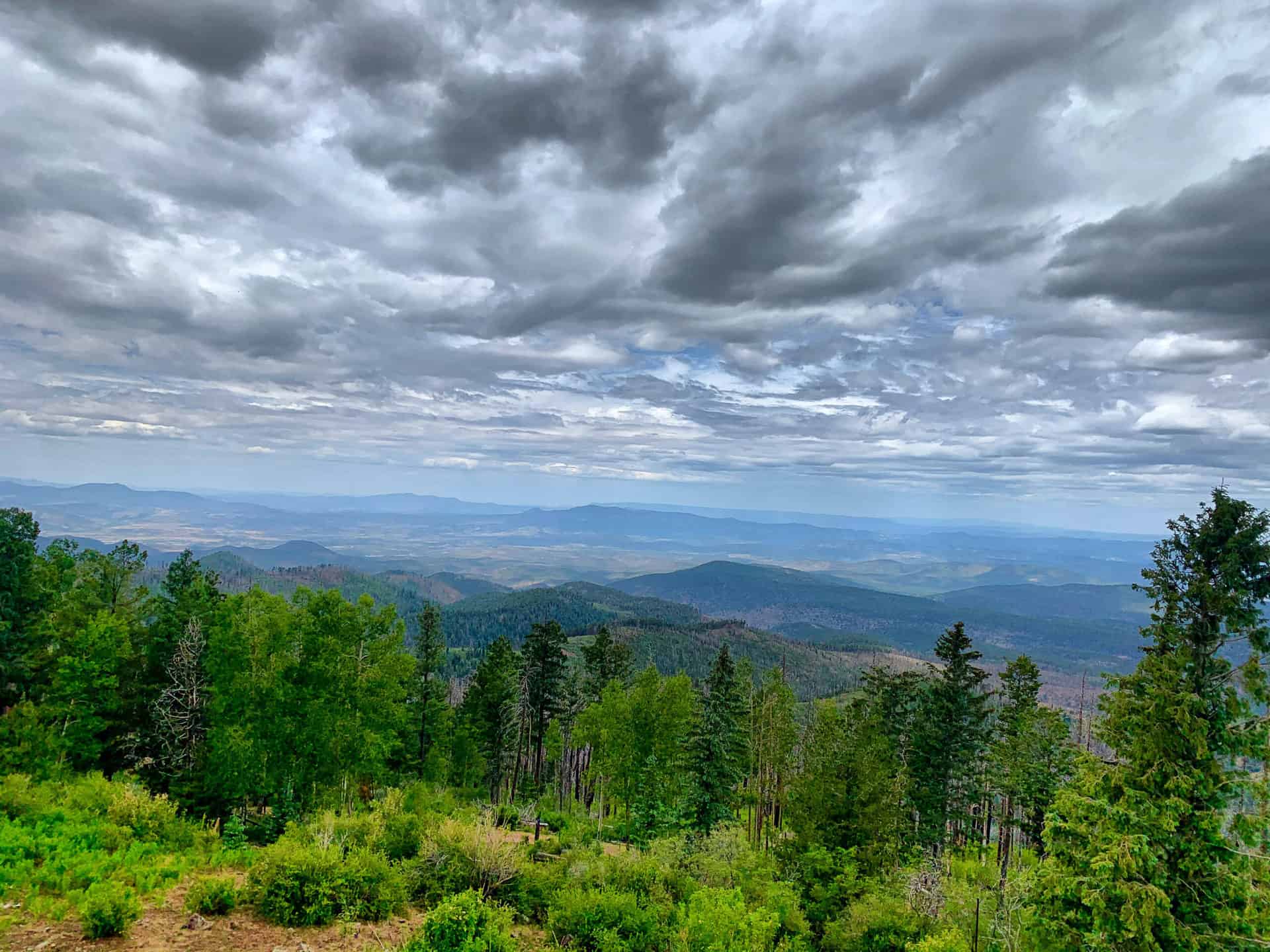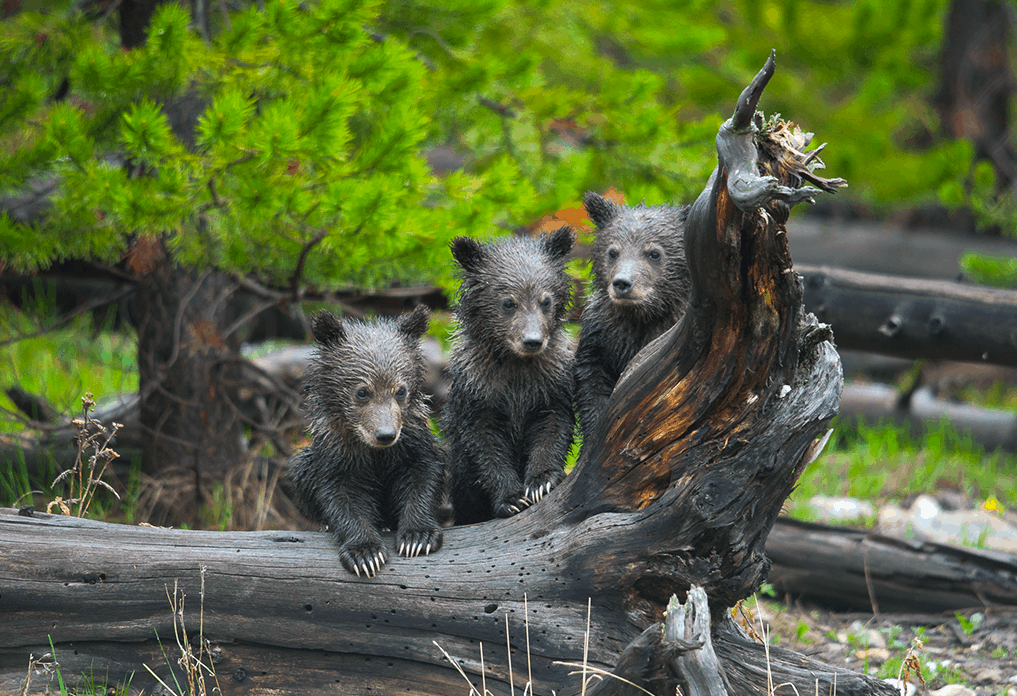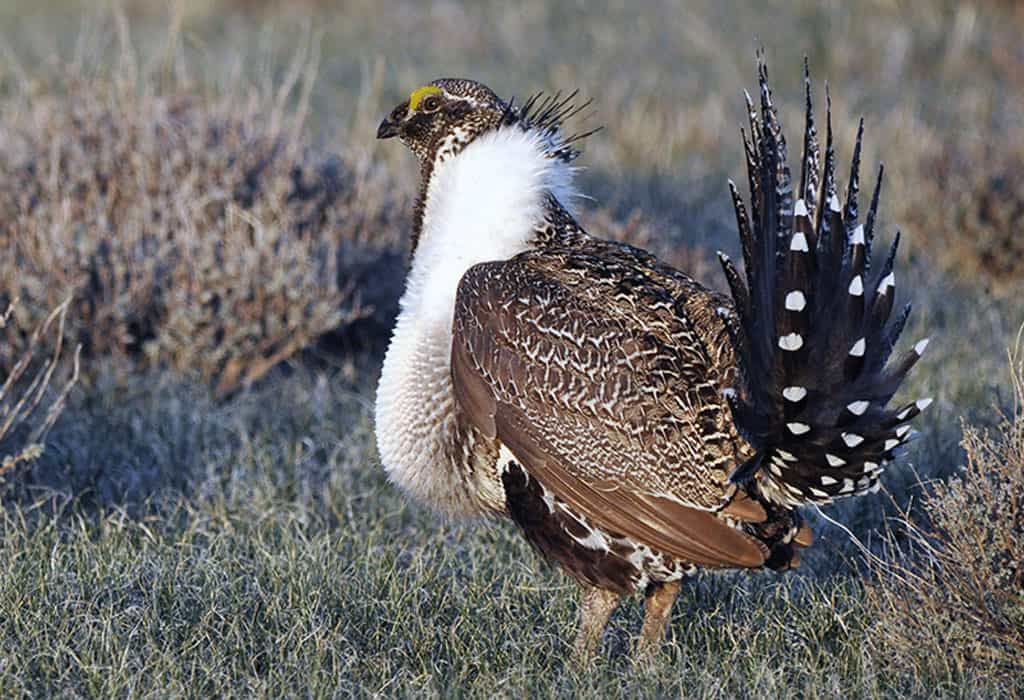This month, some PBS stations around the country are airing a documentary titled Wilder than Wild: Forests, Fire, and the Future. It is a one-hour film about wildfire issues in California. This is an extremely timely and important topic. Unfortunately, the filmmakers have chosen to make glaring omissions—excluding key scientific and environmental voices and leaving out essential facts—that cause their film to distort these issues more than it informs. As a result, the film gives cover to policies that are harmful to forests, dangerous for public safety, and detrimental to the climate, while steering attention away from genuine solutions.
The problems with Wilder than Wild can be traced back to filmmakers Stephen Most and Kevin White’s previous short documentary The Fire Next Time, which was about the Rim Fire. The Rim Fire was a very large forest fire that occurred in California in 2013, mainly on national forest lands that border Yosemite National Park. These are lands managed by the Forest Service. Large wildfires have become a big business for this federal agency because it can sell the burned trees to timber companies at cut-rate prices while keeping money from these sales to pad its budget.
The Forest Service saw a big opportunity in wake of the Rim Fire and proposed a massive post-fire logging project. In fact, the Forest Service sought to cut more trees in the Rim Fire area than had been cut on all of California’s national forests combined over the previous three years. Post-fire logging causes extensive ecological damage, so some environmental organizations such as the Center for Biological Diversity and the John Muir Project began working to challenge the Forest Service’s Rim Fire logging project.
Yet when the Rim Fire documentary The Fire Next Time was shown at an environmental film festival in 2015, it generated controversy because the filmmakers had not interviewed any of the environmental groups at the forefront of challenging the Rim logging project or any of the scientists researching the adverse impacts of post-fire logging. Instead, the filmmakers focused on an entity called Yosemite-Stanislaus Solutions (YSS) that was involved in promoting logging of the Rim Fire forests. YSS is an example of what is called a “collaborative.” Collaboratives bring together local logging interests and some local environmental groups to consult on Forest Service projects, and the Forest Service touts endorsements of logging by these collaboratives.
However, the role of collaboratives has received widespread criticism. Numerous environmental groups troubled by their experiences with collaboratives issued a collective statement on how collaboratives are dominated by logging interests. As a participant in a collaborative near YSS explained, “It became apparent that there was no real accountability, and the Forest Service would simply pick and choose what it wanted from the collaborative. Essentially, the collaborative served to provide cover for what the Forest Service was going to do anyway, with minor adjustments.”[1]
The underlying problems with The Fire Next Time became apparent when its script writer, Stephen Most, wrote about his experiences with the film. He explained the film’s science advisor was a Forest Service employee—Malcolm North—and the Forest Service threatened to block the filmmakers from using statements from North unless they changed the film to fit with the Forest Service’s messaging. Stephen Most candidly states that the filmmakers sought to have the Forest Service promote their film to rural audiences, so they altered their film to accommodate the Forest Service.[2]
Unfortunately, this pattern of deference to the Forest Service appears to have continued as they expanded their film into a longer version, retitled Wilder than Wild. Along the way, the filmmakers interviewed some scientists concerned by the Forest Service’s logging projects, but these segments were all left on the cutting room floor. Ultimately, the filmmakers chose to silence criticism of the Forest Service’s current actions, and instead constructed a film that fits comfortably with the Forest Service’s current messaging about forest fires. In so doing, they discarded an important opportunity to show what really happened after the Rim Fire, and, as a result, Wilder than Wild wound up with misleading conclusions about the broader implications of the Rim Fire for the climate crisis and public safety.
What Really Happened After the Rim Fire
It is shocking to compare the statements about the Rim Fire made by the Forest Service and its allies in the YSS, as presented in Wilder than Wild, with the on-the-ground reality. From the film, one gets the impression that the Rim Fire burned mainly at high severity—i.e., killing most of the trees. The reality is that the federal government’s own Monitoring Trends in Burn Severity analysis showed that less than 20% of the Rim Fire burned at high severity. In other words, while the Rim Fire had patches of high-severity effects, the majority of the fire burned at low and moderate severity. That’s how most forest fires in California burn now, and historical evidence shows that’s also how they burned prior to modern fire suppression.
Moreover, the high-severity patches in the Rim Fire created ecosystem benefits, but viewers of Wilder than Wild do not hear about those benefits. Instead, the speakers featured in Wilder than Wild portray the high-severity patches as threat to wildlife such as the spotted owl, and they use this as a justification for trying to prevent similar fires in the future. The filmmakers ignored abundant scientific research on how high-severity fire patches create excellent wildlife habitat in dead trees and understory vegetation. These areas have some the highest level of wildlife diversity and abundance of any forest type, comparable to or even greater than old-growth forests. For example, post-fire forests are great places to find the spotted owl’s prey. It should come as no surprise then to learn that Forest Service’s own surveys found large numbers of spotted owls living in the Rim Fire area after the fire. In fact, spotted owls were using the Rim Fire area at higher than average levels compared to other forests in the region. However, the filmmakers chose not to mention these findings.
Likewise, at the time that the Forest Service was developing its massive post-fire logging project, it did not properly disclose its owl survey results to the public. When groups involved in challenging the project uncovered these surveys, they discovered that the Forest Service would be logging most of the occupied spotted owl habitat. In response, the Center for Biological Diversity, John Muir Project, and California Chaparral Institute filed suit against the Forest Service over the Rim Fire logging. These groups do not appear in Wilder than Wild. Instead, the filmmakers celebrate John Buckley, a leader of Yosemite-Stanislaus Solutions, yet they do not mention that Buckley intervened against this lawsuit and in favor of allowing the logging of occupied spotted owl habitat to proceed. With help from Buckley and the YSS collaborative, the Forest Service was able to do extensive clearcutting in the Rim Fire area. Nonetheless, the environmentalists’ lawsuit helped ensure that significant portions of the post-fire forest remained uncut for the time being.
Unfortunately, the Forest Service then developed another project to cut key portions of the post-fire forests that had escaped the initial logging. This next Forest Service project was based heavily on the claim that new trees would not grow back naturally in high-severity patches from the Rim Fire. This claim was also repeated by speakers featured in Wilder than Wild. However, one can now walk through even the largest high-severity patches within the Rim area and see abundant new trees growing naturally without replanting. This growth is most apparent in the unlogged areas, whereas the natural tree regeneration often gets crushed in areas where post-logging occurs. Yet rather than show the new trees growing in the unlogged areas, the filmmakers instead selected to focus on a Forest Service-sponsored tree planting in an area that had obviously been clearcut and bulldozed after the fire, leaving only bare ground.
Likewise, despite the extensive evidence of natural regrowth, the Forest Service chose to proceed with its new project, claiming that the post-fire forests needed to be clearcut to allow for artificial tree planting. Once again, YSS members promoted the cutting. And once again, environmental groups that were not featured in Wilder than Wild, including Greenpeace, challenged the project. Their lawsuit is currently still in court. This latest case helps to illustrate key problems with Wilder than Wild’s approach to climate issues and public safety, as described below.
The Climate Crisis, Wildfire, and Logging
One of the new plaintiffs on the current lawsuit against cutting the Rim Fire forests is acclaimed climate scientist James Hansen. He joined the environmentalists’ lawsuit out of concern regarding the carbon emissions that result from cutting down the post-fire forests, and how those emissions will increase the climate crisis. Yet, Wilder than Wild is silent about the carbon emissions from Forest Service logging projects done under fire-related justifications. Instead, the film only presents some early estimates of carbon emissions from forest fires, when subsequent research has shown those initial numbers to be highly exaggerated. The filmmakers ignore science showing that forest fires produce only a small fraction of carbon emissions, whereas logging is one of the biggest sources of greenhouse gases. Thus, Wilder than Wild contributes to the problem of misinformation about wildfire being used to promote logging policies that harm the climate.
Overlooking Public Safety Solutions—Working from the Home Outward
Much as Wilder than Wild is silent about the Forest Service’s fire-related logging, it is also silent about the crucial role of home retrofits in wildfire safety. The film contains numerous images of burning buildings, but vigilant viewers may notice that the burnt houses are often surrounded by green unburned trees. While the message of the film is that fire in forests must be altered for public safety, the reality is that most houses that burn during wildfires are not igniting from contact with forest fires flames. Instead, they are mainly ignited by windblown embers, or by the flames of adjacent houses that have not taken adequate fire safety precautions from these embers. The good news is that homeowners can protect their houses from igniting by taking steps such installing fine-mesh vent screens to keep embers from getting inside the house. The effectiveness of these steps was first demonstrated by a Forest Service scientist named Jack Cohen.
As one article summarized, “Cohen thought he had come up with a way to save houses and to let fires burn naturally—he thought it was a win-win. And so in 1999, he presented a paper about his findings at a fire conference in front of people from the Forest Service and state fire agencies. These were people who were in a position to change policies. But Cohen says they were totally uninterested. Cohen’s research implied that basically everything about how the Forest Service dealt with wildfires was wrong.”
Just as the Forest Service shied away from Cohen’s findings, so too do the Wilder than Wild filmmakers remain silent about this important opportunity. The most effective actions to help communities safely coexist with fire-dependent ecosystems involve what is called “working from the home outward.” Because the home fire-safety retrofits at the center of this strategy largely take place outside of national forest lands, the home-outward approach does not provide the same opportunities for the Forest Service to boost its budget as from the forest-alteration approach celebrated by Wilder than Wild. So the forest-alteration projects of the Forest Service have gotten the lion’s share of the attention and resources when it comes to wildfire policy, whereas there has been comparative little financial assistance provided to help communities with home safety retrofits.
The aftermath of the Rim Fire provides a stark example of this problem. The Forest Service’s fire-related logging projects can be quite costly. When the Forest Service sought to pursue its second project to cut down more post-fire forests in the Rim Fire area (as described above), it was able to get funding for it in a bizarre way. The Department of Housing and Urban Development (HUD) offered grants to states for community disaster recovery and rebuilding. With the support of the Yosemite-Stanislaus Solutions members and their allies, the California state government took $28 million dollars of these HUD funds and gave them to the US Forest Service to subsidize more clearcutting of post-fire forests in remote areas, rather than helping fire-impacted communities rebuild in fire-safe ways. That is another key issue in the lawsuit by James Hansen and the environmental groups against the project. And it illustrates how the promotion of logging in fire policy can come at the expense of public safety. But once again, Wilder than Wild makes no mention of these issues, even as the filmmakers celebrate the Forest Service and YSS members who promoted this problematic project.
Alternate Resources about Fire
Ultimately, Wilder than Wild presents a distorted lens for viewers hoping to understand forest fires and their implications for climate change and public safety. Many of the film’s problems stem from what the filmmakers chose to omit. They silence the voices of key scientists and environmental groups and avoid any content that casts an unfavorable light on the Forest Service’s current approach to wildfires. For example, the Forest Service’s fire-related logging is largely unacknowledged in the film. Instead, the filmmakers focus on the role of prescribed fire in the forest-alteration policies they promote, while not mentioning how the Forest Service generally makes logging be a precondition for prescribed fire. Furthermore, the word logging is replaced with innocuous-sounding euphemisms such as “fuels reduction” and “management,” while the ecological and climate harms from fire-related logging are not discussed. Viewers should stay alert to these omissions.
Other problems stem from the way that the filmmaker’s narrative is built around significant distortions of the actual effects of the Rim Fire in order to create a bogeyman for the rest of the film. The weblinks included among the text above will give viewers tools to help identify these distortions. And PBS stations should consider airing a different Rim Fire documentary called Searching for the Gold Spot: The Wild after Wildfire to offer their viewers a fuller view of what is really occurring after large wildfires.
Another useful resource is called “6 Best Kept Secrets about Fire.” It features a series of concise short videos about key wildfire-related topics, such as Climate Change & Fire. An excellent article from the Cornell Lab of Ornithology titled “Old Flames: The Tangled History of Forest Fires, Wildlife, and People” combines interviews with scientists on the frontlines of research on fire ecology and fire safety. Teachers seeking additional materials about fire can find them at “Resources for Teaching about Forest Fires and Climate Change.” And an introduction to the importance of fire-safety home retrofits can be found in “A New Direction for California Wildfire Policy: Working from the Home Outward.”
As that report illustrates, there are sensible ways to respond to the role of wildfires amid a changing climate that are effective for public safety, ecologically appropriate for forests, and help address the climate crisis, but viewers will need to look beyond the distorted lens of Wilder than Wild to find those solutions.
Notes.
1) Bevington, Douglas, “Lessons from Groups that Litigate Logging” in 193 Million Acres, ed. Steve Wilent (Society of American Foresters, 2018), 475. ↑
2) Most, Stephen, Stories that Make the World: Reflections on Storytelling and the Art of Documentary (Berghahn Books, 2017), 228. ↑





